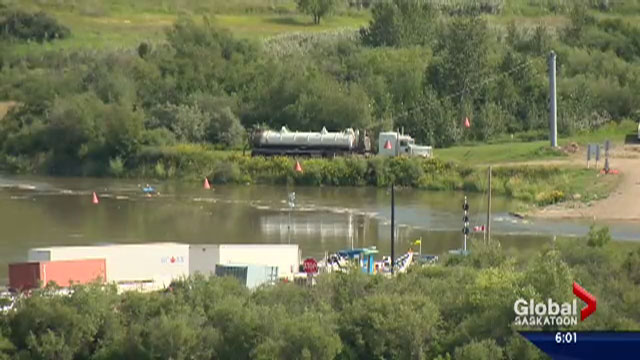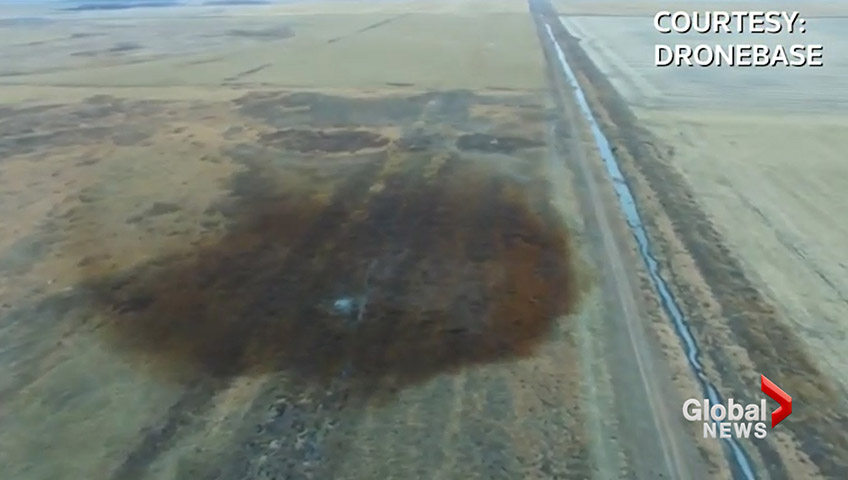Alberta nanotech company uses ‘intelligent paint’ to detect pipeline leaks

There are over 450,000 kilometres of pipeline running through Alberta.
Oil and gas companies use a variety of technologies to detect leaks, but most are meant to target major large-scale incidents.
“They’re only really good at detecting really large leaks,” said Direct-C CEO Adrian Banica. “If you have a major production disruption, it will detect that but it will not detect the small seeps that, over time and at critical locations, can lead to a lot of damage.”
Direct-C is an Alberta company using nanotechnology to not only detect leaks, but small seepages in oil and gas lines.
“We take various proprietary polymers and we mix nanoparticles within it to create an intelligent paint system that, once we apply it to a surface, we can use that paint to detect what’s happening with that surface.”
The nanoparticles are used to create what the company calls an “intelligent paint,” designed to react only to liquid hydrocarbons like natural gas.
It’s then sprayed onto a substrate and attached to circuits, before being divided into one-inch wide sensing tape, up to 100 metres long. That tape is then attached to pipelines, where it can monitor and detect the smallest of leaks.

Direct-C has uptake globally, including, it said, among half of the Pathways
Alliance members, Canada’s leading oil and gas producers.
Of course, it’s not just fancy paint at work on pipeline integrity. Companies are expanding their leak-detection systems to include drone, acoustic and anti-corrosions technologies.
The Alberta Energy Regulator said, as part of a statement: “[We] are interested in the potential of any new development of reliable and innovative technologies to further improve pipeline performance and reduce risks to the public and environment.”
According to the AER’s Pipeline Performance Report, “in 2021, there were about 41 per cent fewer incidents than in 2012, even though the total pipeline kilometres grew by nine per cent in the same period.”
More information about the Alberta’s current standards and requirements for pipeline integrity can be found in the AER’s Directive 077 : Pipelines — Requirements and Reference Tools.

© 2022 Global News, a division of Corus Entertainment Inc.




